Durable. Sustainable. Handmade.
The defining feature of Sekishu Washi is its enduring strength, described as “Japan’s most durable handmade paper.”
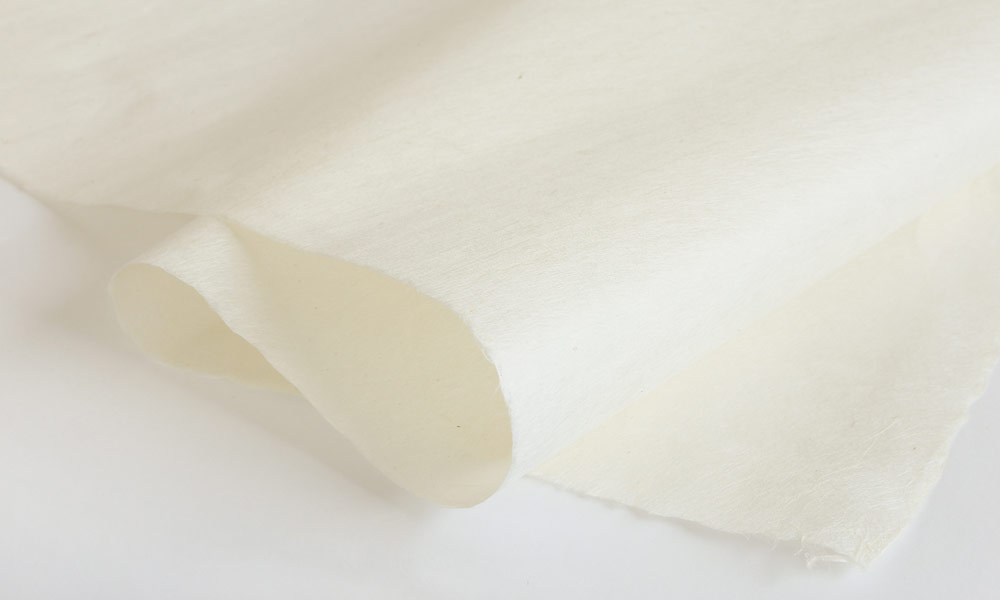
It is said that long ago, when fires broke out, Osaka merchants threw their account ledgers made of Sekishu-Banshi into wells for protection, and pulled them out later to continue using again. This anecdote illustrates the strength and water-resistance of Sekishu-Banshi, which is even said to last one thousand years.
For our kozo, the paper mulberry used as raw material in washi-making, we use only high quality, locally-grown plants. Most washi is made using only the soft inner layer of kozo bark called shirokawa, or “white bark,” in order to keep the paper as white as possible. However, Sekishu-Banshi is made using also the amakawa, or “green bark,” layer of epidermis. The tougher amakawa fibers become intertwined and woven into the final product making it Japan's strongest handmade washi.
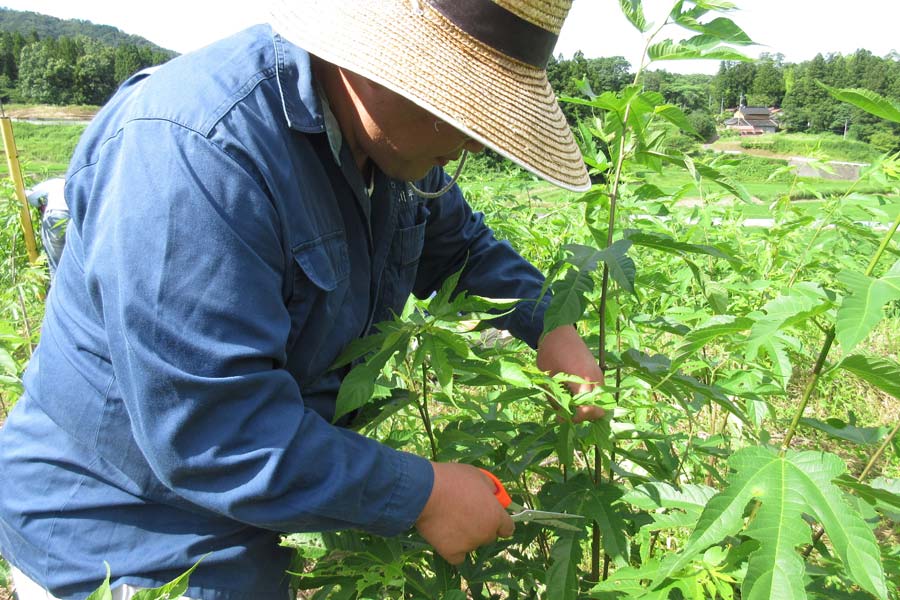
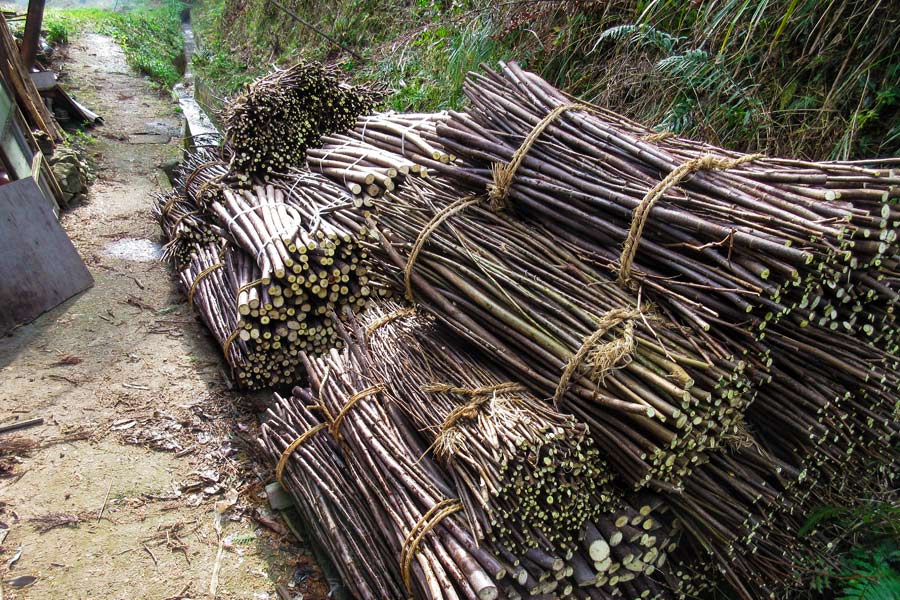
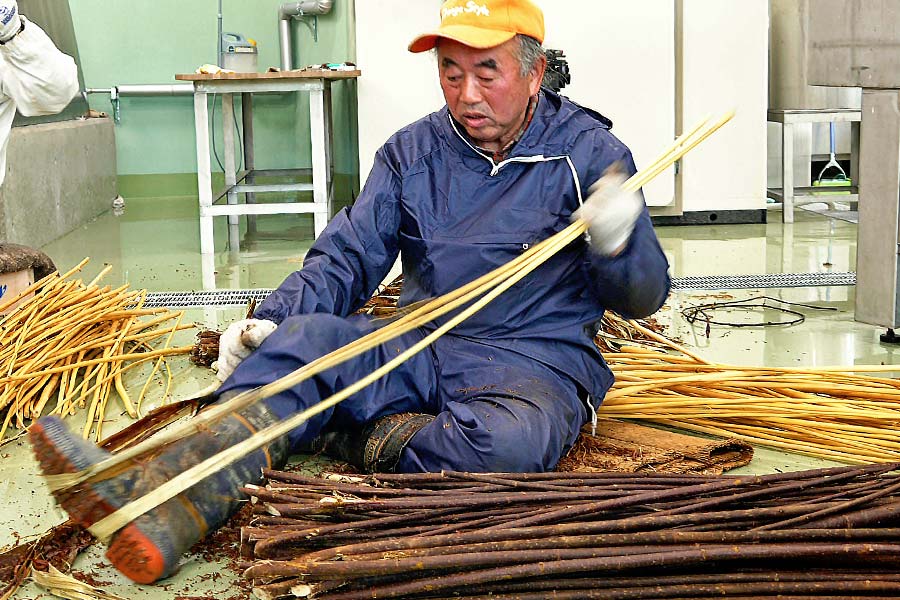
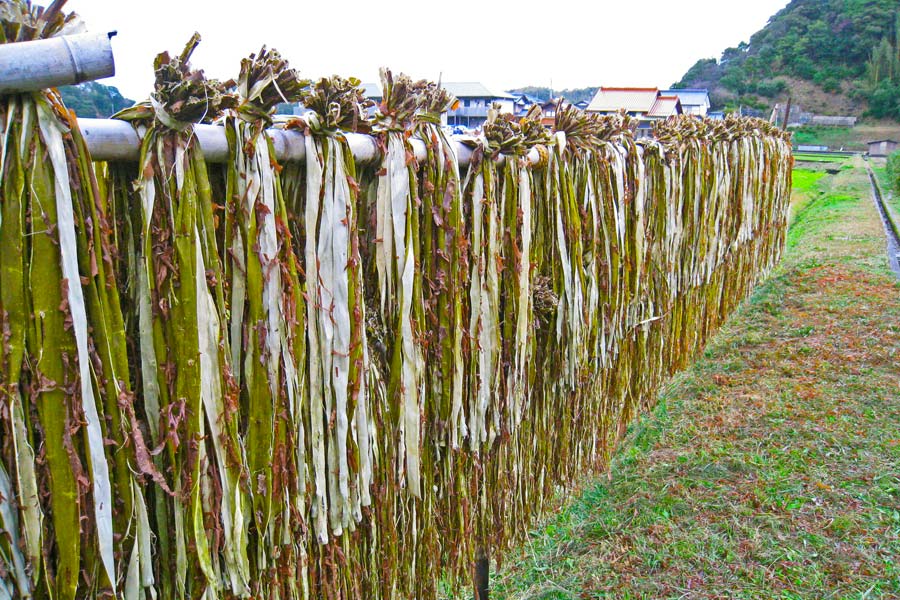
The production process is also vital to the ultimate resilience of our paper. Unlike tamezuki, the accumulation method, in which water drains from the mold, the nagahizuki method allows fibers to intertwine evenly and more tightly by shaking the screen mold back and forth or side to side. Also by drying paper sheets slowly, more hydrogen bonding is promoted between fibers to make the paper more durable and water resistant.
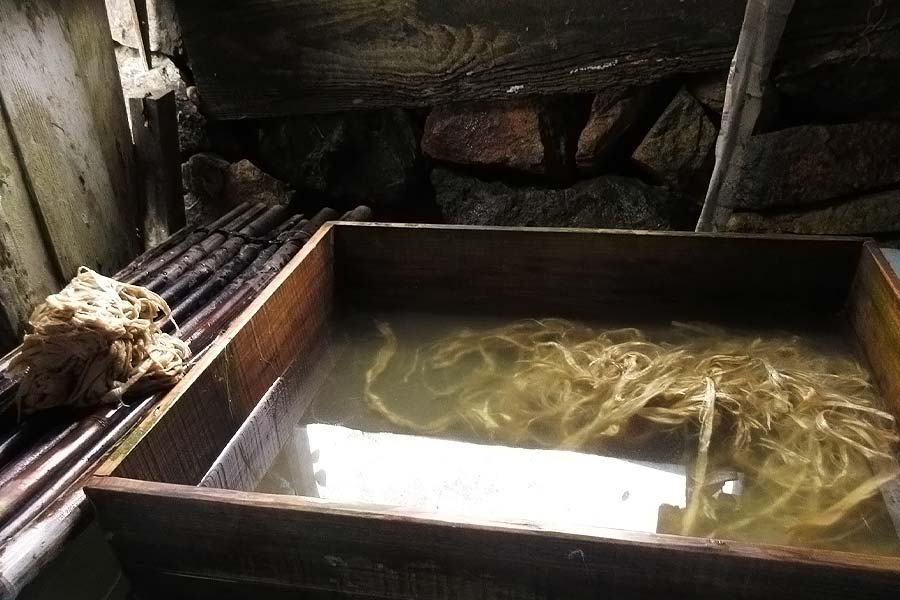
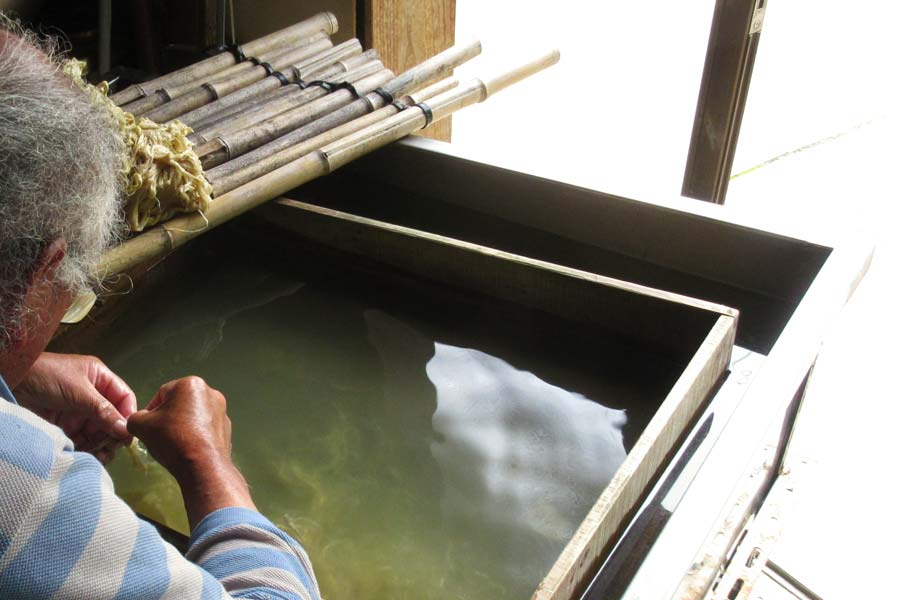
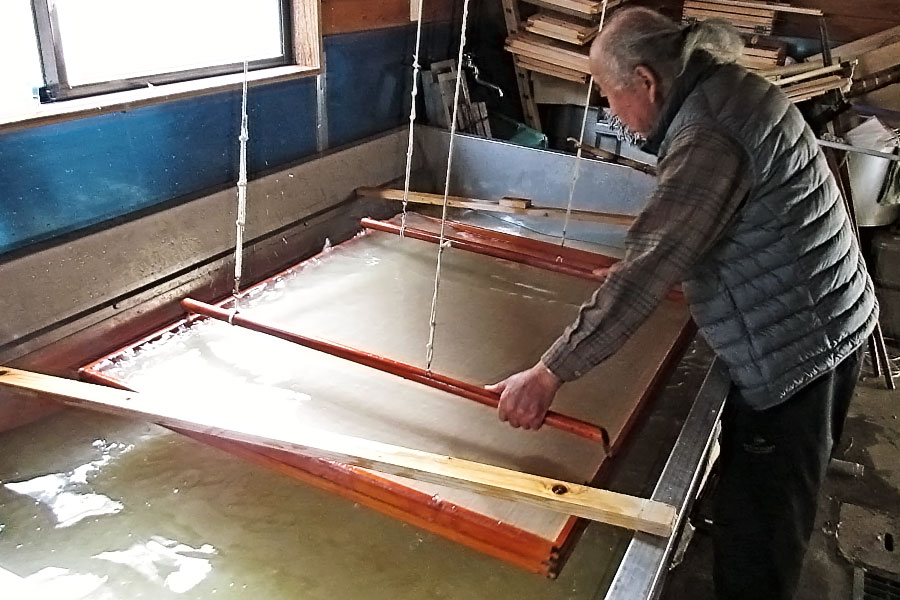
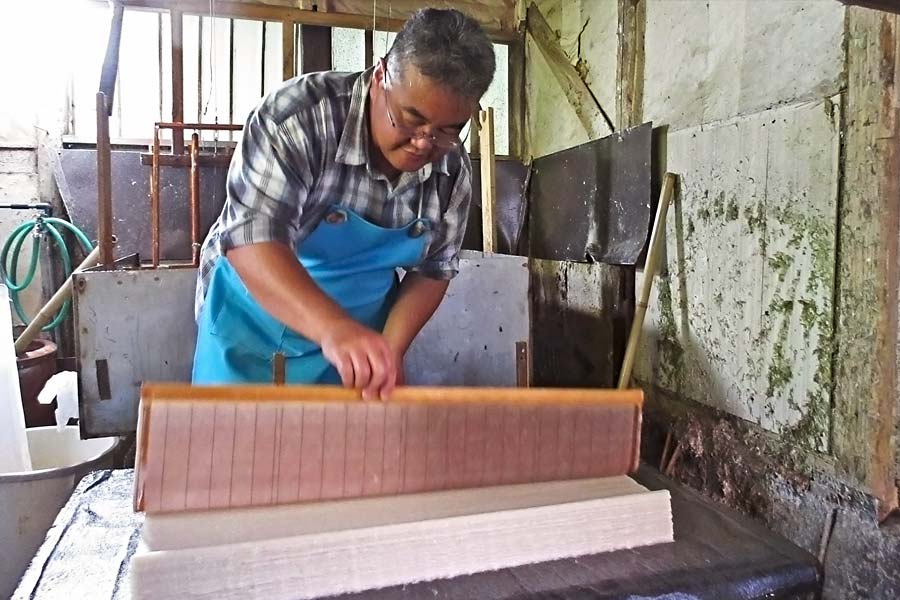
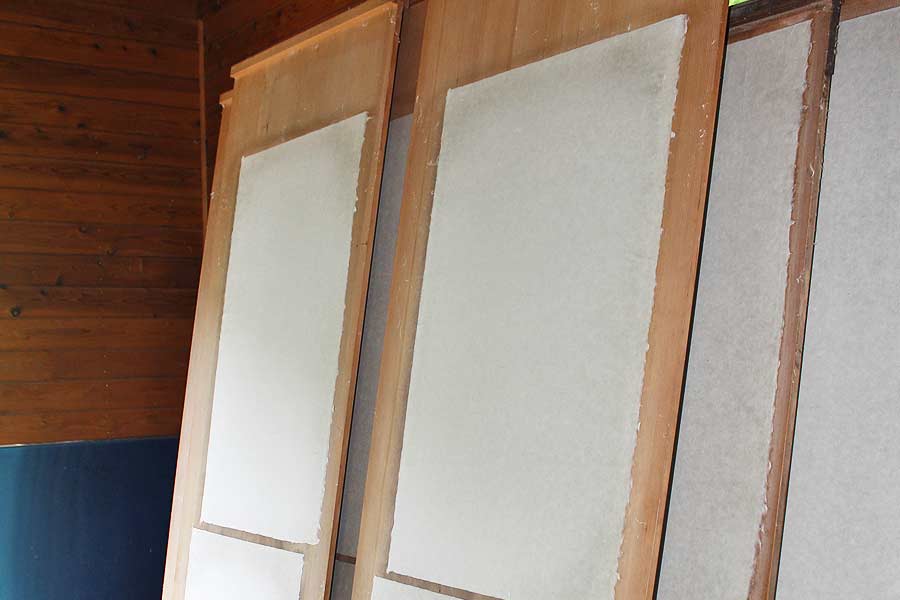
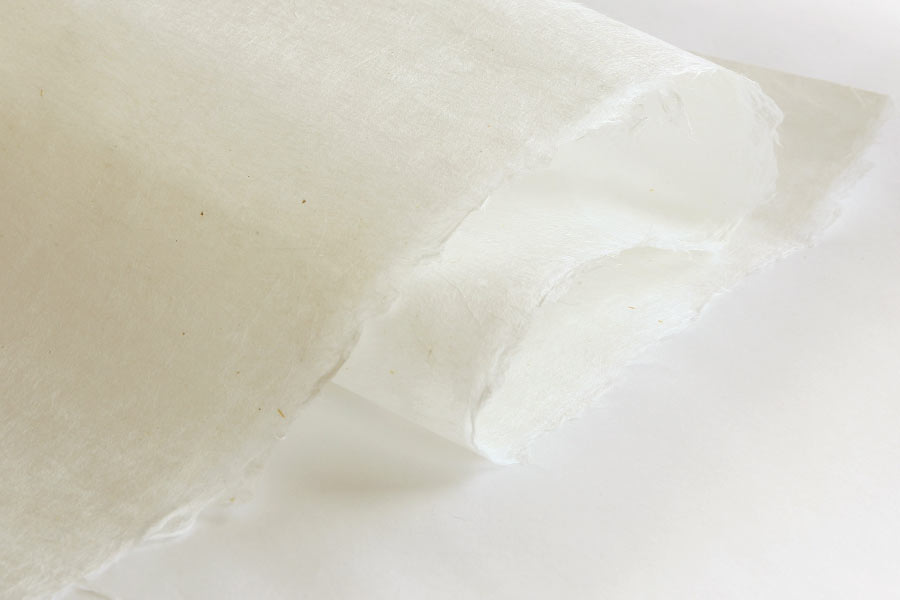
Sekishu Washi is also valued for its elegant sheen and organic tone. The amakawa epidermal layer of kozo bark gives washi a slight amber hue, resulting in a glossy yet soft, and organic tone to the surface.
With its premium strength and texture, Sekishu Washi has long been used primarily for household commodities such as calligraphy, shoji screen paper, etc. In particular, its extreme durability has made it a popular material for restorations of historical properties at shrines and temples. In recent years, it has drawn great attention from various industries such as fine arts, crafts, architecture, and interior design.
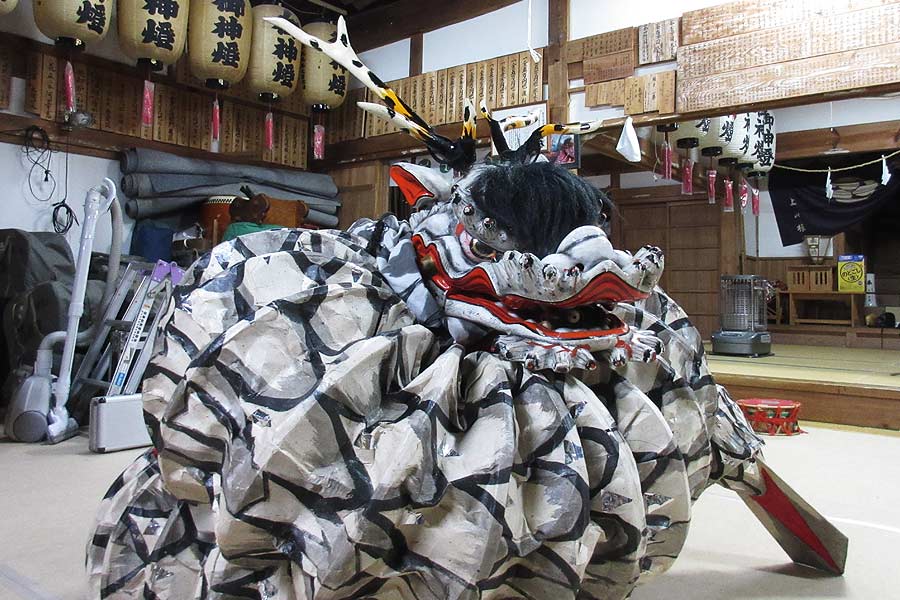
In 1989, Sekishu Washi was declared as a “Traditional Craft” by the Minister for Economy, Trade and Industry.
In recognition by the Japanese government, Sekishu Washi is defined by the following production requirements:
Techniques / Process
- Paper shall be made with the following techniques:
- Application of either “nagashizuki” or “tamezuki” papermaking techniques
- Use of screen mold made of bamboo or kaya grass.
- Use of tororo aoi (abelmoschus Manihot) for “neri” (mucilage binding agent)
- Drying to be done by either on “wooden board” outside or “steamed metal board”
Raw Material
- The raw material to be used for the papermaking process shall be kozo, mitsumata, and/or ganpi.
What is Sekishu-Banshi?
While Sekishu Washi may include kozo, mitsumata and/or ganpi in the raw material, paper made with only 100% locally-grown kozo and processed through specified techniques is called Sekishu-Banshi.
In 2009, Sekishu-Banshi was the first handmade paper to be designated by UNESCO as an Intangible Cultural Heritage. In 2014, it was registered again as “Washi:Craftmanship of Traditional Japanese Handmade Paper” together with two other washi makers, Hon-minoshi and Hosokawa-shi.
Specified Requirement for Sekishu-Banshi as nationally-designated Important Intangible Cultural Asset:
- The only raw material is kozo.
- Papermaking is conducted with traditional techniques and tools.
- Kozo bark is whitened and matured by boiling in water with either plant wood ash or soda ash.
- Chemical bleaching agents and fillers should not be added.
- Hand-beating or an equivalent method is applied.
- Paper mixture is stirred together with tororo-aoi (aibika plant), and shaken on a bamboo screen mold.
- Drying is done using either on “wooden board” outside or “steamed metal board.”
- The paper shall maintain the traditional physical properties of Sekishu-Banshi including texture, tone, and luster.